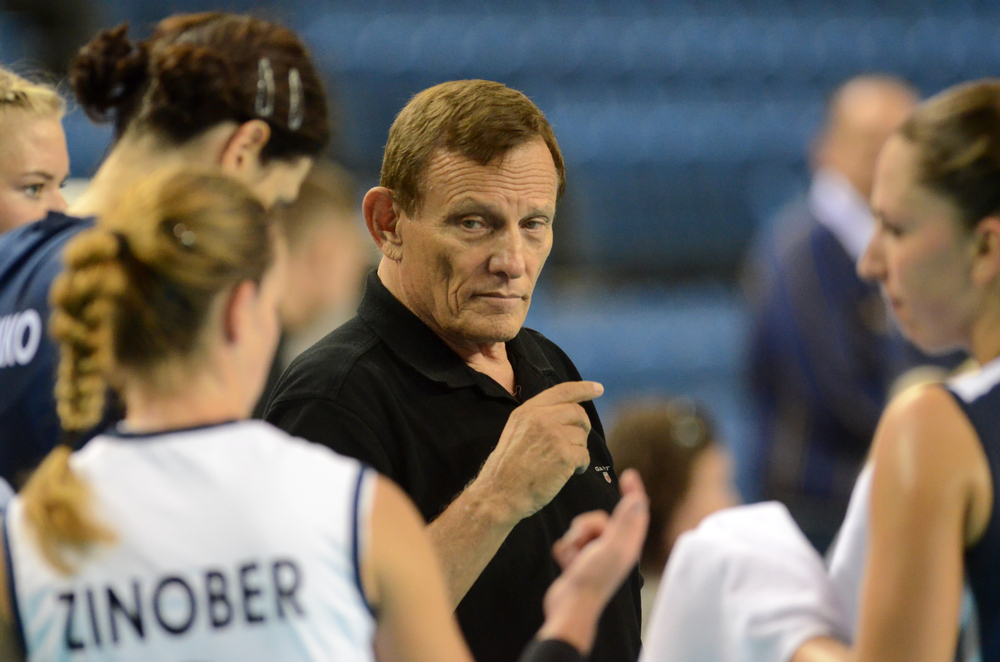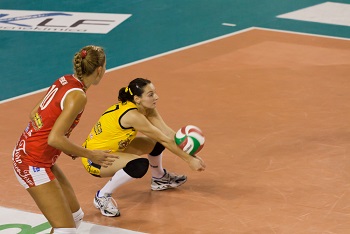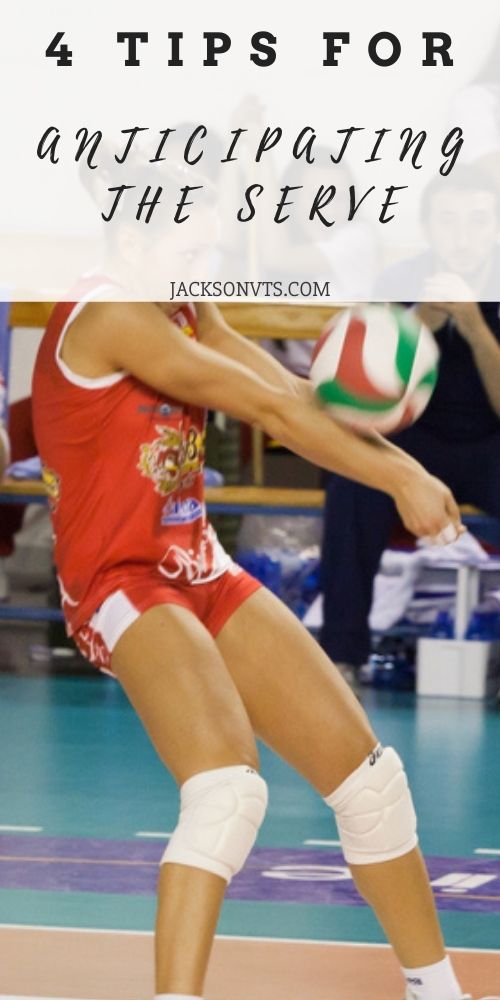Volleyball Passing Instruction
Volleyball passing instruction and best cues to assist skill development for serve receive.
Learning the Skills of Passing
When first learning how to pass, you must learn technique. If you play volleyball without learning proper form first, this is a big mistake.
Especially with passing, swinging the arms is a bad habit youth players develop when first learning to play volleyball.
Swinging the arms is a very difficult habit to break. Start by learning proper technique and you'll save yourself from wasting a lot of time and frustration.

Volleyball Passing Instruction
Technique for Passing
Focus on giving your players short cues to help remember the information.
The ready position...
- Hands in front of the knees. Knees should be slightly bent. Be ready to move your feet. Constantly be anticipating what's happening.
- Feet slightly staggered, shoulder width apart. Be in an athletic stance, not on heels. Always be ready to move.
Ready Position for Receiving
Moving to pass...
- Feet to the ball. The most important thing is to get the feet there. If you can't get in position, then you can't pass. How well you get in position will be determined by how well you anticipate and quickly move.
- Shuffle. Learn to shuffle the feet.
- Knee drop or run through on short serves. Knee drops are effective because when you drop to a knee, your platform is under the ball.
- Face the ball and angle the arms.Angle the arms to the target.
- When taking the ball outside your body, drop the lead shoulder.
- Get the platform out early. Keep the elbows straight and flat.
- Keep your hands and wrists together while you pass.
- Don't swing your arms. If you have trouble and keep swinging, focus on starting with your platform higher.
Focus on Technique First
Again, it's extremely important to focus on developing skills before playing volleyball. It's very tempting to scrimmage and practice game-like situations, but it can be a big mistake to start playing an actual game too soon.
Playing volleyball without developing skills will lead to creating bad habits.
Ideally, it's best to...
- Focus on the skills of volleyball first.Competing in scrimmages and tournaments comes later after the skills are developed.
Have many practices focusing on skill training. The skills of volleyball (passing, setting, hitting, serving, digging, blocking, etc) should be the focus of practices. - Skills within drills. After skills have been practiced and are understood fairly well, add the skills to game-like situations.
- Never completely abandon skill training. If you don't use it, you'll lose it. Therefore, always include skill training as part of practice even after players have developed pretty good individual skills.
Best Drills Involve Pass, Set, Hit
The best drills in volleyball are game-like.
For example, the best serve receive drill involves passing a ball coming from a server.
Pepper drills are the worst drills for serve receive.
This is because of such things as transferability and how muscle motor programs operate.
Anticipation in volleyball
A huge factor to your success is your ability to anticipate and react. To anticipate well, you must be able to perform skills in game-like situations.
For example, think of the difference between peppering and receiving a serve. To receive a serve effectively, it's critical to read the server and recognize such things as the flight of the ball, ball trajectory, how the ball spins, etc.
These anticipation skills are critical and can't be developed by partner pepper drills.
Improve the individual skills by improving anticipation skills
When you improve your ability to recognize and react, you allow yourself more time to get in position to make the play.
Volleyball passing instruction and drills in practice should involve situations that allow players to recognize patterns. This will make it easier for players to get in position to make plays.
The steps to make successful plays are...
- Anticipate (recognize the situation).
- Move efficiently (use the proper volleyball movements).
- Positioning (get in position to make the play).
- Execute the play (once in position, focus on successful execution).
If you enjoyed these tips and would like to keep it close to you at any time, just save this pin to your Pinterest Volleyball Training Board.





